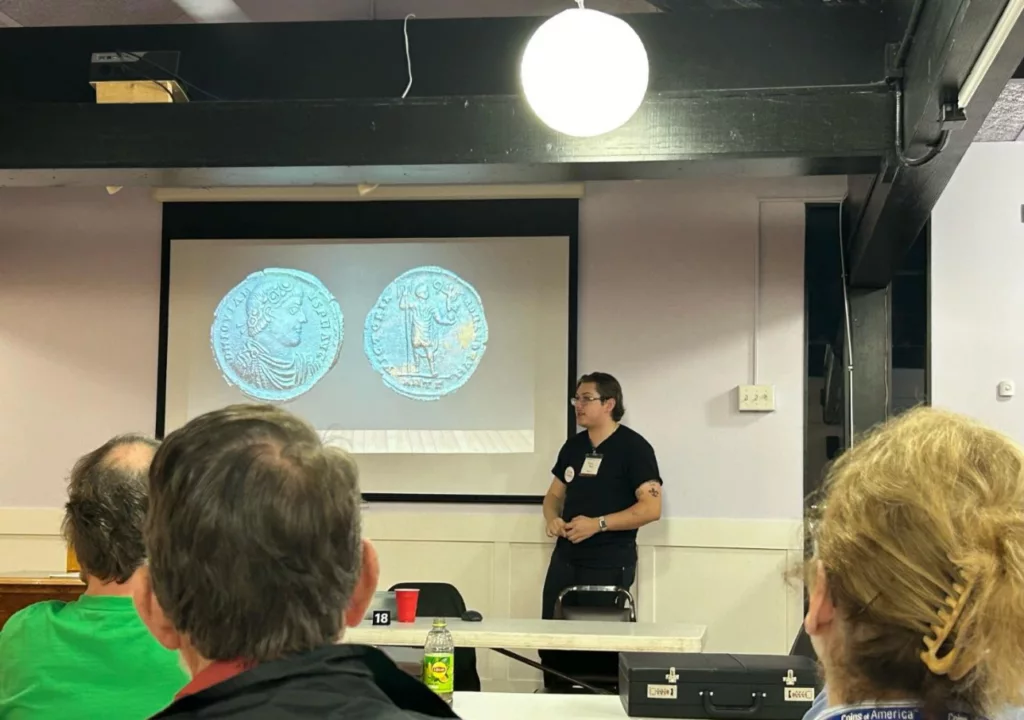SEPTEMBER EDUCATION PRESENTER
Jaden Boyd – Ancient Roman Currency

Jaden Boyd – Ancient Roman Currency

Mike gave an excellent presentation on the do’s and dont’s in preparation for a numismatic exhibit. Points that he emphasized were: He also stressed the importance of each of the above and further broke down the presentation to: creativity, attractiveness & overall balance. Excellent and very informative presentation! Thank you, Mr. Mike!
By: Bryon Crowder People would ask me what kinds of coins I like to collect. Being a smart-alec, I would humorously reply ‘Bargains!’ I think most collectors would agree that there is a certain smile you get when you buy a coin for significantly less than its value. This is what happened here. I used…
First attested in English in 1829, the word “numismatics” comes from the adjective “numismatic,” meaning “of coins.” It was borrowed in 1792 from French “numismatique,” itself a derivation from Late Latin “numismatis,” genitive of “numisma,” a variant of “nomisma,” meaning “coin.” “Nomisma” is a Latinization of the Greek νόμισμα (nomisma) which means “current coin/custom,” which…
By Ron Mund I have always had an interest in coins at a very early age. Throughout the years I saved coins off & on and put them in plastic bags. Around 1980 my interest in coin collecting grew. I lived in Germany off and on 4 times for a total of 30 years. I…
By Ron Gammill If you are a large cent collector and you collect the middle date series (1816-1839), you will run up against several very difficult varieties that you might just dream of adding to your collection because of their rarity and cost. In fact, you might be looking for a variety that was only…
By: Ron MundWelcome back Ron! Chief Iron Tail Iron Tail (1842 – May 29, 1916) was an Oglala Lakota Chief and a star performer with Buffalo Bill’s Wild West. Iron Tail was one of the most famous Native American celebrities of the late 19th and early 20th centuries and a popular subject for professional photographers…